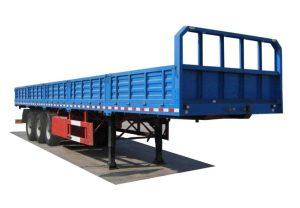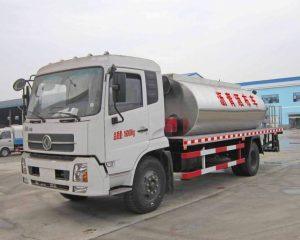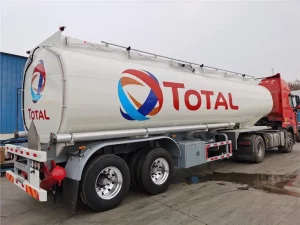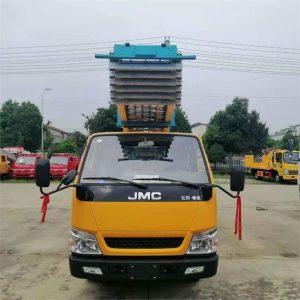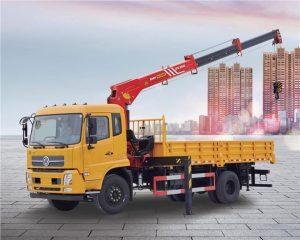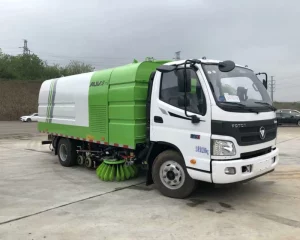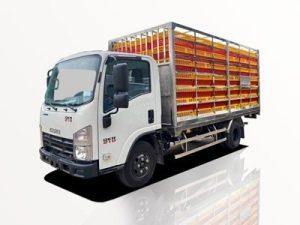Monday to Saturday - 8:00 -17:30
Understanding Garbage Truck Body: Types, Features, and Innovations
The garbage truck body is essential for the efficient collection, transportation, and disposal of waste. These specialized vehicles are crucial for maintaining cleanliness in our communities. This article explores the various types of garbage truck bodies, their features, advancements in technology, and best practices for optimizing their usage. Whether you are a municipal planner, waste management professional, or simply curious about how garbage trucks operate, this comprehensive guide will provide valuable insights.
1. Overview of Garbage Truck Bodies
Garbage truck bodies come in various styles and configurations to suit different needs. They are typically designed to accommodate various waste materials, from household refuse to industrial waste. Understanding the components and design of garbage truck bodies is essential for improving waste management processes.
1.1 The Importance of Garbage Trucks
Garbage trucks play a pivotal role in public health and environmental sustainability. They help prevent litter and pollution, reduce the risks of vector-borne diseases, and promote recycling efforts within communities.
1.2 Basic Components of a Garbage Truck Body
- Chassis: The vehicle’s frame, which supports the body and contains the engine and other mechanical components.
- Body: The container designed to hold waste, which can vary in shape and size based on the truck’s type.
- Lifting Mechanism: Used for lifting and emptying waste containers into the truck body.
- Compression System: Compact waste material to maximize space in the truck.
- Hopper: The section where waste is initially collected before moving to the main body.
2. Types of Garbage Truck Bodies
There are several types of garbage truck bodies, each designed for specific waste management tasks. Here are some of the most common types:
2.1 Rear-Loader Garbage Trucks
Rear-loader garbage trucks feature a rear hopper for waste collection, making them a popular choice for residential areas.
Advantages of Rear-Loader Trucks
- Can handle a variety of waste types.
- Easy access for waste collectors.
- Efficient for curbside collection.
Disadvantages of Rear-Loader Trucks
- Limited capacity compared to other types.
- Slower unloading process.
2.2 Front-Loader Garbage Trucks
Front-loader garbage trucks are equipped with hydraulic arms that lift containers and unload waste directly into the truck’s front.
Advantages of Front-Loader Trucks
- High capacity, suitable for commercial waste.
- Fast unloading and reduced labor costs.
Disadvantages of Front-Loader Trucks
- Less maneuverable in residential areas.
- Requires specialized training to operate.
2.3 Side-Loader Garbage Trucks
Side-loader garbage trucks have a lifting mechanism on the side, making them efficient for urban waste collection.
Advantages of Side-Loader Trucks
- Access to narrow streets and tight spaces.
- Can operate with one person in many cases.
Disadvantages of Side-Loader Trucks
- Longer collection times due to equipment setup.
- Limited capacity.
2.4 Automated Garbage Trucks
Automated garbage trucks utilize advanced technology, such as robotic arms, for waste collection without manual labor.
Advantages of Automated Trucks
- Increased safety for operators.
- Reduction in labor costs over time.
- More efficient collection routes.
Disadvantages of Automated Trucks
- Higher initial investment cost.
- Requires compatible waste containers.
3. Features of Garbage Truck Bodies
Modern garbage truck bodies come with a range of features designed to enhance efficiency, safety, and environmental impact.
3.1 Compaction Systems
Many garbage truck bodies include a compaction system to reduce the volume of waste, allowing for more efficient transportation.
3.2 Safety Features
Safety is paramount in waste management. Features such as rearview cameras, sensors, and improved visibility help prevent accidents.
3.3 Low-Emission Engines
Manufacturers are increasingly focusing on low-emission engines to minimize the environmental impact of garbage trucks. These engines meet strict emission standards and contribute to cleaner air.
4. Innovations in Garbage Truck Design
As technology advances, the design of garbage truck bodies is evolving to meet the needs of efficient waste management.
4.1 Smart Waste Collection Systems
Smart technology allows municipalities to monitor waste levels and optimize collection routes, leading to fuel savings and operational efficiency.
4.2 Environmentally Friendly Materials
Manufacturers are using recyclable materials to construct garbage truck bodies, reducing the environmental footprint of these vehicles.
5. Maintenance of Garbage Truck Bodies
Routine maintenance is essential to ensure the longevity and efficiency of garbage truck bodies.
5.1 Regular Inspections
Scheduling regular inspections can help identify potential issues before they become major problems, ensuring the truck operates efficiently.
5.2 Cleaning and Sanitation
Cleaning the truck body after collection is vital to prevent odors, pests, and contamination. Establishing a regular cleaning schedule can help maintain hygiene.
5.3 Replacement of Worn Parts
Keeping a close eye on wear and tear helps ensure that parts like the lifting mechanism and compaction system function correctly. Prompt replacements can prevent costly downtimes.
6. Practical Tips for Garbage Truck Operators
Operators play a crucial role in the efficiency of garbage collection. Here are several tips that can enhance their effectiveness:
6.1 Training and Education
Investing in training programs for operators ensures they are familiar with the equipment and safety protocols.
6.2 Route Optimization
Utilizing route optimization software can help identify the most efficient collection routes, reducing time and fuel costs.
6.3 Community Engagement
Engaging with the community can improve compliance with waste collection protocols and encourage recycling, enhancing the overall effectiveness of waste management.
7. The Future of Garbage Truck Bodies
The waste management industry is evolving, and garbage truck bodies will continue to adapt to meet the challenges of sustainable waste disposal.
7.1 Electric and Hybrid Garbage Trucks
As the push for sustainability intensifies, electric and hybrid garbage trucks are emerging as viable alternatives to traditional diesel-powered vehicles.
7.2 Integration of AI and Machine Learning
Artificial intelligence can improve route planning and optimize waste collection, enhancing overall efficiency.
8. Frequently Asked Questions
8.1 What materials are commonly used to build garbage truck bodies?
Garbage truck bodies are typically made from high-strength steel, aluminum, or composite materials to withstand heavy usage and prevent corrosion.
8.2 How do garbage truck compaction systems work?
Compaction systems use hydraulic pressure to compress waste, allowing for a greater volume of waste to fit in the truck body and reducing the number of trips required for disposal.
8.3 Are automated garbage trucks safer than traditional ones?
Automated garbage trucks can be safer due to reduced manual handling by operators, but proper safety measures still need to be enforced during operation.
8.4 How often should garbage trucks undergo maintenance?
Garbage trucks should have routine inspections and maintenance performed regularly, ideally every 1,000 miles or according to the manufacturer’s recommendations.
8.5 What is the lifespan of a garbage truck body?
The lifespan of a garbage truck body can vary but is typically between 10 to 15 years, depending on factors like usage intensity and maintenance practices.
8.6 Can garbage trucks collect recycling and compost at the same time?
While some garbage trucks are equipped to handle recyclable and compostable materials, it usually requires specialized bodies designed for dual-stream collection.



